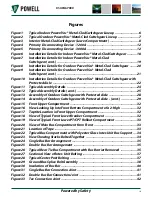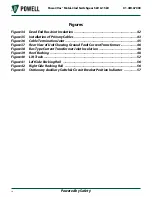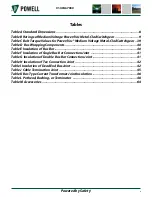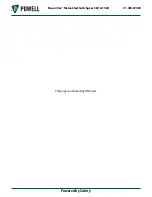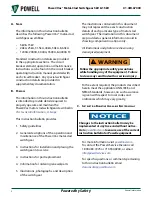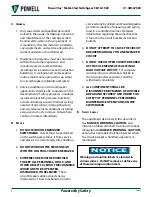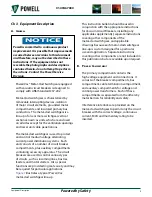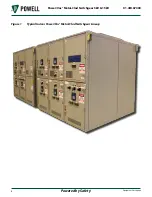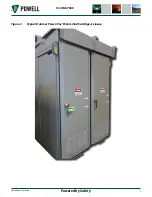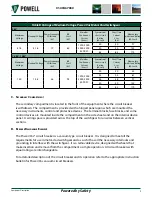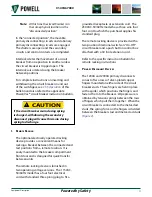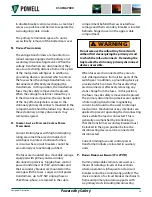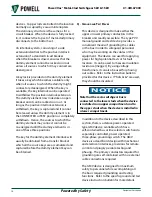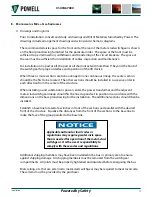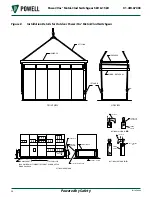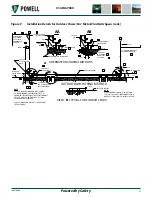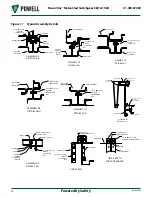
Powered by Safety
®
11
Equipment Description
01.4IB.67000
Note:
At this time the circuit breaker is in
the same physical location as the
“disconnected position”.
In the “connected position”, the movable
primary disconnecting circuits and stationary
primary disconnecting circuits are engaged.
The shutters are open and the secondary
circuits and control contacts are completed.
Interlocks deter the movement of a circuit
breaker from one position to another unless
the circuit breaker is tripped open. The
interlocks also deter closing the breaker
between positions.
For complete instructions on inserting and
withdrawing the circuit breaker in and out
of the switchgear, see
of this
bulletin and also refer to the applicable
Power/Vac
®
circuit breaker instruction bulletin.
!
CAUTION
If the circuit breaker main closing spring
is charged, withdrawing the secondary
disconnect plug will cause this main closing
spring to discharge.
I. r
emote
r
AckInG
The optional electrically operated racking
device provides a convenient means for
racking a breaker between the connected and
test positions from a remote location. It is
easily mounted to the breaker compartment
front door and is designed for quick transfer
between units.
The remote racking device is furnished in
two operating voltage versions. The 115VAC,
50/60Hz model has a four foot electrical
cord with standard three prong plug to fit a
grounded receptacle or extension cord. The
230VAC, 50/60Hz model has a three wire four
foot cord to which the purchaser applies his
standard plug.
The remote racking device is provided with a
two position directional switch, an “On-Off”
circuit breaker and a push button control box
attached with a 30 foot extension cord.
Refer to the specific instruction bulletin for
remote racking instructions.
J. p
rImAry
d
ISconnect
d
evIceS
The 1200A and 2000A primary disconnects
consist of two rows of silver-plated copper
fingers mounted on either side of the circuit
breaker studs. These fingers are held in place
with a spider which positions the fingers and
fastens them to the breaker. Wipe pressure is
obtained by tension springs between the rows
of fingers which pull them together. When the
circuit breaker is connected to the metal-clad
studs, the spring force on the fingers is divided
between the breaker stud and metal-clad studs
.

